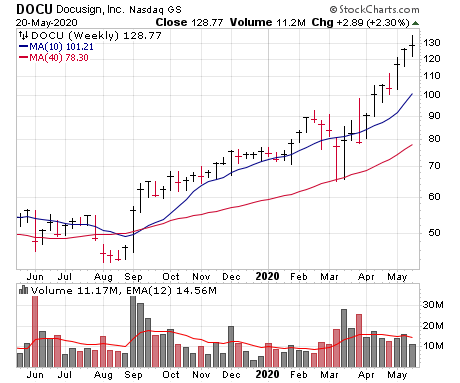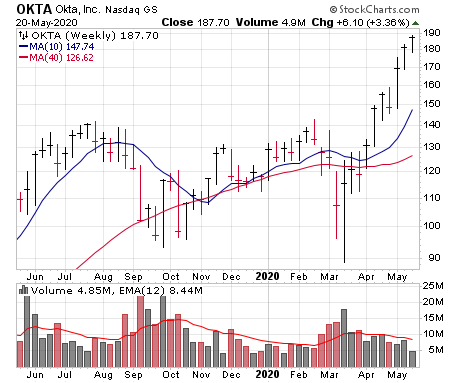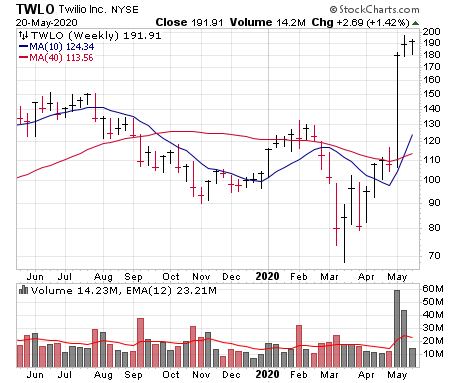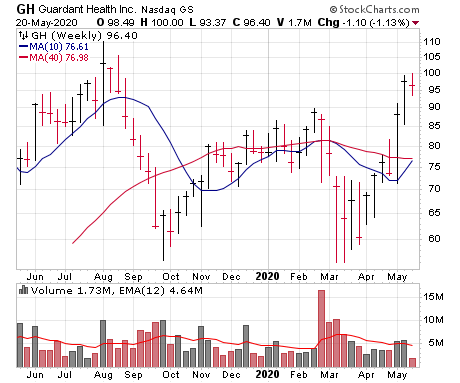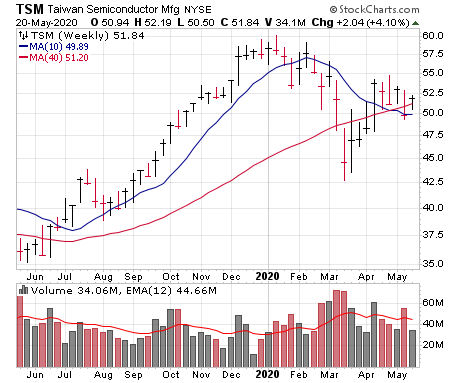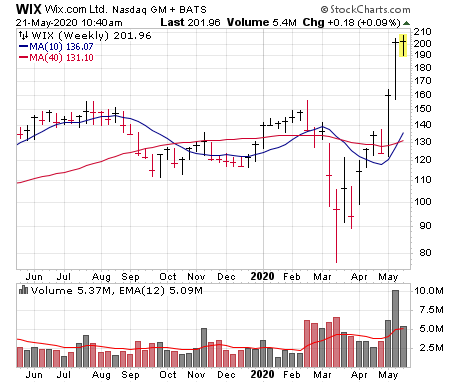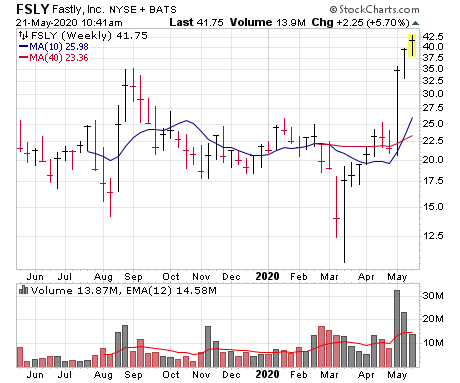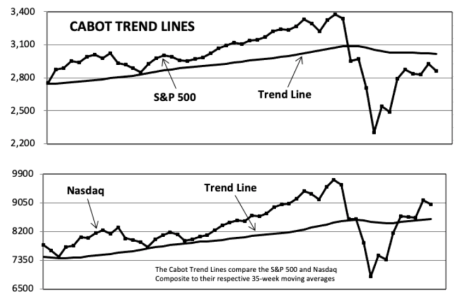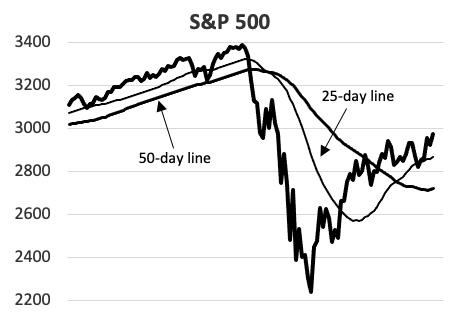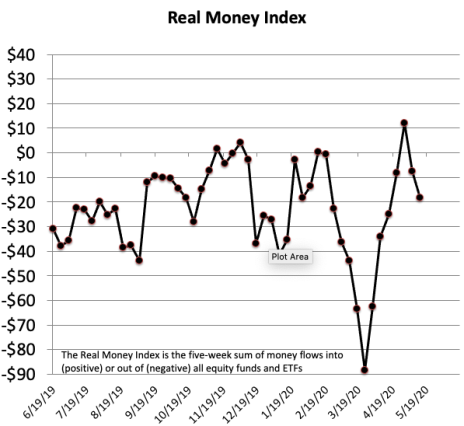The market has hit a little turbulence over the past week, first seeing the major indexes test support and then, this week, as the major indexes rebounded, growth stocks have softened a bit. But net-net, the evidence remains mostly positive, so we remain optimistic. In the Model Portfolio, we did a little trimming last week, but as some growth stocks pull in, we’re adding a half position in a fresh leader.
Cabot Growth Investor 1446
[premium_html_toc post_id="205785"]
The Perfect isn’t the Enemy of the (Very) Good
In a perfect world, everything would be lined up on the bull side of the fence. Market timing-wise, not only would our Cabot Trend Lines and Cabot Tides be bullish, but investor sentiment would be in the dumps. And for stocks and sectors, everything would be going up (no divergences), but growth stocks would be leading the way, with most bursting out of early-stage consolidations.
That’s a great ideal to shoot for, but I’ve been at Cabot for nearly 21 years (and followed the market before that, too), and there have only been a few times when all those stars were aligned. Far more often, the market throws investors various curveballs to keep them off balance, which is exactly what we’ve seen since the market lows in March.
In the last issue, we wrote about the growing dichotomy between growth stocks (soaring to the heavens) and the major indexes and broad market (mostly meandering). Such an environment was a good thing for the kind of stocks we traffic in (the Model Portfolio is still outperforming the S&P 500 by more than 20% this year), but it lends itself to some topsy-turvy action.
Sure enough, the past few sessions have brought some rotation out of many extended growth stocks and into economically sensitive sectors that had been lagging. At one point on Monday, the Model Portfolio was flat-ish on the day while the Dow was up 1,000 points!
That’s brought some angst, of course, and nobody that’s unbiasedly examining all the evidence can claim this is a “perfect” environment. But it remains pretty darn good: Every leading growth stock we own or follow continues to act normally (some are still moving up), our own Aggression Index is firmly positive (i.e., no major shift to “safe” stocks) and the rotation into the broad market has kept our Cabot Tides pointed up.
That doesn’t mean you should be throwing caution to the wind, or that further potholes aren’t coming for growth stocks; indeed, we actually trimmed a couple of positions last week that had enjoyed massive runs, and we came into this week still holding more than one-third of the portfolio in cash. Further consolidation in growth names wouldn’t shock us at all.
But barring a major change in the evidence, we think rest periods will likely bring good buying opportunities in growth stocks—we’re starting a position in one new name tonight.
What To Do Now
Remain optimistic, but don’t get ahead of yourself. Last week, we sold one-quarter of our position in both Dexcom (DXCM) and DocuSign (DOCU), but tonight, we’re adding a half-sized (5% of the portfolio) position in Chegg (CHGG), which has a great story and chart. After the buy, our cash position will be around 34%.
Model Portfolio Update
After many weeks of outperformance, growth stocks are finally meeting with a little selling even as the major indexes push higher. Such action elicits all types of emotions, but as always, it’s best not to buy or sell based on emotion—you want to make decisions based on the evidence of your stocks and the overall market trend.
The good news is that the evidence remains mostly positive, with our Cabot Tides still green and all leading stocks we own or are watching pulling back normally. In fact, the well-deserved rest for growth stocks is just beginning to present some decent-looking entry points—tonight we’re starting a position in Chegg.That said, we’re still not pushing the envelope. After trimming two positions last week and tonight’s buys, the portfolio will still have around 34% in cash. From here, we’re aiming to give our winners plenty of rope if need be, while spying new buys if growth stocks continue to shake out.
Current Recommendations
| Stock | No. of Shares | Portfolio Weightings | Price Bought | Date Bought | Price on 5/21/20 | Profit | Rating |
| Chegg (CHGG) | New | — | — | — | 63 | — | Buy a Half |
| Chewy (CHWY) | 1,595 | 4% | 45 | 4/20/20 | 40 | -10% | Hold a Half |
| Cloudflare (NET) | 2,715 | 5% | 26 | 4/20/20 | 28 | 7% | Buy a Half |
| Dexcom (DXCM) | 289 | 8% | 216 | 11/15/19 | 399 | 85% | Hold |
| DocuSign (DOCU) | 982 | 8% | 65 | 9/13/19 | 133 | 104% | Hold |
| Okta (OKTA) | 947 | 12% | 150 | 4/20/20 | 188 | 25% | Buy |
| Teladoc (TDOC) | 631 | 7% | 78 | 11/01/19 | 175 | 124% | Hold |
| Twilio (TWLO) | 830 | 10% | 174 | 5/8/20 | 194 | 12% | Buy |
| Vertex Pharmaceuticals (VRTX) | 414 | 8% | 199 | 11/8/19 | 285 | 43% | Buy |
| CASH | $597,042 | 39% |
Chegg (CHGG 63)—We wrote up Chegg in Other Stocks of Interest in the last issue, so we won’t rehash all of that—suffice it to say that its online education platform has a strong history of growth thanks to its on-demand and personalized services that cover a variety subject matters. It has just a small fraction of its potential market (2.9 million subscribers in a 36 million addressable market in the U.S. alone, with another 18 overseas), and growth is picking up steam as people go online during the shut-in. While schools should reopen for the most part in the fall, there’s little doubt that the last two months have introduced a ton more users to Chegg, which should propel business going forward. The stock staged an earnings-induced breakout two weeks ago on more than 10 times average volume, which is a rare, bullish clue of an overwhelming change in perception. The stock has pulled in a few points of late, and we’re going to add a half-sized position (5% of the portfolio) to the portfolio tomorrow. BUY A HALF
Chewy (CHWY 40)—CHWY remains sluggish, meandering near the low end of its range of the past month. However, it still hasn’t done anything wrong (the 50-day line is just above 38 and rising) and actually did find some good-volume buying last week. The stock may need to wait until the next quarterly report (due out June 9) for a catalyst, but we’re just going to play it by the book—we’ve nudged our initial loss limit from the mid-35s to 37 or so (give or take a couple of dimes), so if it can hold above there, we’re happy to give the stock a chance; we don’t think anything has changed with the fundamental story. However, below there, we’ll cut bait with our half position. As it stands, we’ll switch our rating to Hold and see how it plays out. HOLD A HALF.
Cloudflare (NET 28)—Cloudflare remains as jumpy as can be, pulling back from 26 to 23, racing as high as 30 and dipping back to 27—all in the past month. Even so, the stock remains strong (still holding above its 25-day line, currently near 26 and rising), and the quarterly report in early May was a good one: Management said that traffic on its network grew as much in the 12 weeks through April as it did in the prior 12 months, and in terms of new business, Cloudflare’s sales pipeline has every month starting in February, helped by the firm’s comprehensive set of offerings (many competitors don’t have the breadth of services Cloudflare does). We think the firm is likely to become a key behind-the-scenes cog for an increasing number of big firms (13% of the Fortune 1000 are customers) that do more of everything online. Back to the stock, we wouldn’t mind filling out our position (buying another half) if NET can stabilize for a bit. For now, we’ll sit with what we have—though we’re OK buying a half-sized position here if you’re not yet in. BUY A HALF.
Dexcom (DXCM 399)—We decided to trim a few shares (25% of our remaining position) of Dexcom last week for three main reasons: First, of course, the stock was sticking straight up in the air, well above its moving averages; second, it had now more than doubled over six months from its original breakout, with similar stretches (both time and price) often leading to some turbulence in past leaders; and third, both the S&P 500 addition (causes a near-term buying rush) and the firm’s big dilutive convertible bond offering ($1.05 billion) often lead to some near-term selling pressures. All that said, we’re far from calling a top—we still have a good-sized position, and as we’ve written many times, the firm’s G6 (and, next year, the G7) continuous glucose monitor has years of growth potential as Type 1 and especially Type 2 diabetics move away from self-administered injections and into the 21st century. A few weeks of rest or a pullback into some support could have us restoring our Buy rating, but at this point, we advise just sitting tight. HOLD.
DocuSign (DOCU 133)—We cut back on DOCU at the same time we did on DXCM (again selling 25% of our remaining shares), and for much the same reasons—shares were miles above support and were now eight-plus months into their run, having more than doubled from the original breakout. And while there was no index addition or dilutive offering, the firm will report earnings in a couple of weeks (June 4), which given the huge run presents some risk. Again, though, we’re optimistic any near-term headwinds the stock will run into will pave the way for higher prices down the road; part of the reason we take partial profits is to allow us to give our remaining position more room to consolidate if need be. Similar to DXCM, a few weeks of rest or some sort of reasonable knockout move (possibly after earnings?) could offer up a better entry point. For now, we think there are better places to put new money. HOLD.
Okta (OKTA 188)—As states and countries begin to open up, there’s bound to be some shift in activity back to the “real” world and away from the internet. But there’s little chance the world simply returns to the way it was back in January—firms are sure to be more lenient on working from home (Square recently said it’s allowing employees to work from home indefinitely, for instance) and consumers will be more willing to buy/learn/play online as so many have been doing the past two months. All of that means that demand for Okta’s identity security solutions should accelerate, with companies needing to have their networks and accessibility able to handle the new reality. The stock certainly is sniffing that out, as it’s embarked on a strong, persistent advance since early April and is showing us a solid profit. Like many growth stocks, there’s some risk near-term—earnings are due out in a week (May 28 after the close) and the stock is well above support. But OKTA just got going from a nine-month rest last month, so it should be a bit fresher than names that have been running for six or eight months. Long story short, we’re optimistic the stock is in the early stages of a new advance, but a lot will come down to earnings. We’ll stay on Buy, but if you don’t own any, we advise keeping new positions small and targeting dips of a few points. BUY.
Teladoc (TDOC 175)—Given that TDOC benefited from the virus worries and shut-in during February and March, it’s not a surprise it’s beginning to leak air now that economic hopes are growing as places reopen. And, like many other stocks, Teladoc’s recent dilutive convertible share offering hasn’t helped, either. So should we sell? That’s not our plan—in fact, we’ve left the stock rated Hold and sold 60% of our original shares during the upmove partly to give our remaining shares room to maneuver once the inevitable correction occurred. Fundamentally, there’s little doubt Teladoc is knocking it out of the park, with this year’s events bringing telemedicine into the mainstream, and the stock just got going from a giant base at the start of the year, so odds favor it being in the early-ish stages of its overall advance. Of course, if you want to use a relatively tight stop (say, just below the 50-day line, which is near 163), that’s up to you, but our goal is to ride out a downturn because TDOC has the makings of an emerging blue chip in what is effectively an entirely new industry. Our mental stop is down in the 140 to 143 area, and barring any truly abnormal selling, we’ll aim to hang on above there. HOLD.
Twilio (TWLO 194)—We think most investors would do a lot better focusing most (not all) of their portfolios on the liquid leaders—well-traded, institutionally-supported stocks with newer products and great growth that big investors (mutual, pension and hedge funds) have the confidence to build big positions in over time. Twilio fits that description to a T, with a best-in-class communications platform (text, email, you name it) that companies of all sizes are signing up for, and because Twilio’s revenues are usage-based, the company grows as clients use the platform more and more. Of course, the shut-in has accelerated demand, but this is far from a virus story—the firm’s same-customer revenue growth rate has been north of 35% for the past couple of years (43% in Q1), and we think its platform is set up to be one of the key enablers of communications in the mobile age. The stock’s earnings blastoff was extreme (up 39% on the day!), but ironically, those are the kinds of moves that most often follow through on the upside, as TWLO has done. There will be the occasional pothole, but we think this liquid leader heads higher over time. BUY.
Vertex Pharmaceuticals (VRTX 285)—There are many stocks out there making dramatic moves and headlines, but Vertex isn’t one of them—and that’s fine by us, as the stock remains in a steady uptrend as big investors continue to buy in. Buoyant results for the firm’s cystic fibrosis drugs (especially its newer triple combination Trikafta) are expected, but the question is how high those products can drive earnings during the next couple of years—analysts had been modeling around $10 in earnings per share next year (up from $5.33 in 2019), but now they’re looking for nearly $11, and if margins continue to top expectations that figure could continue to go up. As mentioned above, VRTX isn’t the hottest name out there, but it briefly tagged a new high earlier this week and remains in a clear uptrend. We’ll stay on Buy—as always, it’s best if you can get in on dips of a few points. BUY.
Watch List
- Datadog (DDOG 70): DDOG is a hot potato right now, so a meaningful retreat could be in the offing. But we love the application performance management story and the firm’s fantastic growth.
- Inphi (IPHI 109): Inphi’s business is firing on all cylinders, and that’s expected to continue whether the shut-in continues or not. A pullback of a few points from here should offer up a solid entry point.
- Peloton (PTON 45): We think Peloton has the makings of a leading glamour stock, with an offering that’s revolutionizing the giant fitness industry. See more in Other Stocks of Interest.
- Wingstop (WING 122): We think Wingstop can be another Vertex-like performer (not sexy but steady), while also providing the portfolio with a bit of diversification. We love the persistent run in recent weeks—dips of a few points would be enticing.
Other Stocks of Interest
Peloton (PTON 45)—Many of the history’s big winners are firms that have a new product or service that’s changing how a ton of people live, and we think Peloton fits right in that category. The company is the pioneer of the connected fitness trend, where users can “attend” a workout class from their own home—usually via Peloton’s stationary bike or treadmill. But the hardware, while well-built, isn’t the secret sauce; instead it’s the company’s numerous instructors that do live (from home nowadays, but back in studio once the virus clears up) and recorded shows for cycling, strength, yoga, cardio, you name it, providing customers with a massive collection of high-quality, on-demand content … for $39 a month. And if you don’t want to shell out a couple grand for their bike (though there’s a free 30-day at-home trial available), you can use the firm’s app on your own for just $13 per month, which comes with most of the same great content. Business has been growing rapidly for a while, and the virus shut-in has only helped the cause—at the end of March, Peloton had 886,000 connected members (up 94% from a year ago; 90%-plus of members stick around, too) and another 176,000 signed up for the app, which drove Q1 revenues up 66% and helped EBITDA squeeze into the black (two years ahead of plan!). And the momentum is continuing—as of May 12, it said it had crossed the one million connected member mark, leading most analysts to hike their expectations for the current quarter and 2020 as a whole. Long-term, the company has just 3% of its target market, so there’s huge room for growth both in the U.S. and overseas. As for the stock, it was hot soon after its IPO last September, but then came the typical post-IPO droop, which cut shares in half by the March market bottom. But PTON came under intense accumulation right after that, with the Q1 report two weeks ago resulting in a powerful breakout on the stock’s heaviest volume ever. After that big run, the stock has hit a couple of potholes this week, but the retreat has been reasonable. If the stock can calm down a bit (it’s been swinging 5% to 8% a day), it could offer a solid entry point.
Guardant Health (GH 96)—We’ve been keeping a distant eye on Guardant for about a year and a half because the story is potentially huge, and after a 15-month consolidation, it’s beginning to show signs that big investors are building positions. The story is right out of a futuristic Sci-Fi movie—Guardant is championing the liquid biopsy revolution, where its platform (dubbed the 360) uses high-efficiency chemistry, a patented sequencing technology and a bioinformatics engine to produce diagnostic results from blood samples that are just as effective (if not more so) than tissue biopsies, with results coming back far more quickly (nine days vs. 15 days). Guardant’s 360 offering is mostly targeting the advanced cancer patient screening market today (700,000 people, worth $6 billion annually), and it’s making great progress (7000-plus ordering oncologists; 170 million-plus covered by insurance), which is driving growth; Q1 saw 360 test volume up 60% from a year ago. Guardant also has its Omni platform, a genomic profiling tool that helps biopharmaceutical outfits accelerate clinical drug development; test volume there was up a solid 40% in Q1. There are plenty of other tests and trials ongoing to expand its platforms and clinical backing, and the firm is even getting into the COVID testing game, aiming to help companies test their employees as they reopen. Still, the cancer angle is the big one here, and while growth should slow this year (fewer in-office tests going on), there’s no question the upside is huge (revenues up 87% in Q1, well above estimates). As for the stock, it had a huge post-IPO run to 107 back in March 2019, but then went through the wringer, basically getting cut in half twice during the past year. However, GH has come under strong accumulation since earnings in early May, and while there’s some resistance to chew through in the 100 to 110 area, we’re keeping our eyes open for a good-looking setup.
Taiwan Semiconductor (TSM 51)—One of our favorite themes coming into the year was that of 5G smartphones, sales of which were set to boom beginning this year and into 2021 and 2022 as 5G took the telecom world by storm. Of course, the virus got in the way, as both demand (consumers shut in) and supply (overseas manufacturing facilities closed) was crunched; Qorvo (QRVO), which was our pick, got off to a good start but collapsed during the crash. However, we think this was more a postponement than a cancellation of the 5G trend, and one name we’re keeping an eye on is giant Taiwan Semiconductor, the largest chip foundry in the world. Despite its size, the firm has a history of growing quickly (and its stock making good-sized moves) when trends are favorable, and despite global economic issues, the firm’s business remains strong—in Q1, revenues surged 45% from a year ago while earnings leapt 95%, thanks mainly to strength in 5G-related sales (including networks, some smartphones and high-performance computing needed to support those faster networks). Nobody thinks that level of growth will continue, but even in its April monthly update, sales fell “only” 15% from the prior month (and were up more than 28% from a year ago), and as the world slowly returns to normal, demand in its fastest-growth markets should only improve. Granted, we wouldn’t say the stock is among the strongest out there, but (a) it’s still in better position than the average stock and (b) given that the stock just let loose from a 20-month launching pad last October, the current five-month rest is likely to resolve to the upside. A strong-volume surge from here could be a clue that investor perception has turned the corner.
An Explosion of Earnings Gaps
I remember back in early 2007, which was my first year running Cabot Growth Investor, we had a very sharp market dip in February (the Shanghai Shakeout) that quickly gave way to a new advance. I was on vacation with my then-fiancée in wine country in April when earnings season began—and launched a crazy number of huge earnings gaps among new, fast-growing stocks!
I emailed my boss, Tim Lutts, who responded, “I don’t remember the last time we had three stocks up more than 9% in the same day,” as the Model Portfolio had that day. And that was just part of the story, as earnings season launched a heady multi-month run for growth stocks—despite a barely positive year for the market, the Model Portfolio finished up 37% in 2007.
Of course, 2020 isn’t directly comparable to 2007 or any other year; we just don’t have any examples of a prior global shut-in, so we’re not big on using precedents right now. But what they do have in common was hyper-bullish Q1 earnings season--April/May 2007 was the most bullish quarterly reporting season I can remember ... at least until this year!
While the current market as a whole continues to send mixed messages (that’s the big reason why we’ve been holding some cash and not going wild on the buy side), the biggest factor in the bulls’ camp in our view is the recent swarm of earnings gaps. And these are just modest pops in stocks that have already had good runs—we’ve seen a ton of them seen in (a) stocks that are relatively new (IPO’d during the past year) or (b) have been juking and diving for nine or 10 months and look to be just starting new runs. We hopped on one (Twilio) right away, are nibbling at another tonight and there are many others to monitor, too.
In addition to Twilio, there’s Chegg (CHGG), which we wrote about in the last issue and was a classic long-term breakout (we’re adding a half-sized position tonight); Wix.com (WIX), which has a leading website development platform for small businesses and has a similar pattern to CHGG, erupting before and after earnings following a very long rest; and PayPal (PYPL), the e-payment leader, which came out of a 10-month correction.
As for newer issues, there’s Fastly (FSLY), a Cloudflare-like operation that just came public a year ago and has exploded to new highs; Peloton (PTON), the pioneer in connected fitness that blasted off two weeks ago (see “Other Stocks of Interest” for more on that stock); and Datadog (DDOG), the leader in application performance management, which we wrote about in the last issue as well and is on our watch list.
Obviously, there are no sure things when investing—if the market completely gives up the ghost, then many of these gaps could fall apart. But playing the odds, these early-stage, earnings-induced breakouts should bode well for the growth sector down the road … and should offer up some tempting entry points on any near-term pullbacks.
Major Indexes ? Growth Stocks (at least for now)
Most of the time, one glance at the Dow or S&P after the market’s close will give you a pretty good idea of how your portfolio did during that day. But when things are divergent, that’s not the case—in fact, it can actually be the opposite, as the leaders hold firm or advance when the indexes (especially the Dow and S&P) are meandering, but actually sell off when they rise!
That’s the unusual situation we’ve been in of late, where many stocks we own or follow have thrived even as the major indexes have been mostly mediocre. And now we’re seeing a bit of the reverse—Monday saw the major indexes boom higher, but most growth stocks got hit!
It’s never fun to see the indexes stage a big rally while your stocks are in the red, but remember that our market timing system and stock buying/selling rules aren’t tied to the day-to-day action—these one-day (or even one-week) moves don’t necessarily portend anything good or bad.
Bottom line, it’s best to follow the system. With the Tides positive and most leading stocks in firm uptrends, you should be practicing patience with your winners, and realizing that some potholes are expected after big runs. Eventually, things will get back in gear (they always do), but until then, we’ll probably be keying more off the action of leading stocks (including the aforementioned batch of earnings gaps) than any wiggles in the major indexes.
Cabot Market Timing Indicators
We’ve finally started to see a few hiccups in the market, including last week’s brief broad market selloff and this week’s rotation into some beaten-down areas. Overall, though, our thoughts haven’t changed much—we’re not buying hand over fist given the Trend Lines and the market’s dichotomy, but we’re willing to put some money to work as leaders offer entry points.
Cabot Trend Lines: Bearish
Our Cabot Trend Lines remain on the negative side of the fence, with the two major big-cap indexes on different sides of the fence—at last week’s close, the S&P 500 was 5.2% below its 35-week line, while the Nasdaq was 5.1% above its own trend line. We need to see the S&P join the Nasdaq above its 35-week line for a couple of weeks before concluding the longer-term trend has turned up—until then, it’s best to go slow.
Cabot Tides: Bullish
Our Cabot Tides came close to the edge last week, but the market’s rotation has actually helped the cause—all five of the indexes we track (including the S&P 500, daily chart shown here) are safely above their lower (now 50-day) moving averages. That keeps the intermediate-term trend pointed up, which bodes well for the weeks ahead.
Cabot Real Money Index: Positive
Investors certainly aren’t getting comfortable given the market’s ups and downs. Our Real Money Index has returned to positive territory as money has begun gushing out of equity funds and ETFs (including a large $15 billion two weeks ago) once again. Bigger picture, this worry is reloading the bull’s cannon as a huge cash hoard builds up on the sideline, which is a plus—though we’re still taking action based on the action of the indexes and leading growth stocks.
Charts courtesy of StockCharts.com
The next Cabot Growth Investor issue will be published on June 4, 2020.
Cabot Wealth Network
Publishing independent investment advice since 1970.
CEO & Chief Investment Strategist: Timothy Lutts
President & Publisher: Ed Coburn
176 North Street, PO Box 2049, Salem, MA 01970 USA
800-326-8826 | support@cabotwealth.com | CabotWealth.com
Copyright © 2020. All rights reserved. Copying or electronic transmission of this information is a violation of copyright law. For the protection of our subscribers, copyright violations will result in immediate termination of all subscriptions without refund. No Conflicts: Cabot Wealth Network exists to serve you, our readers. We derive 100% of our revenue, or close to it, from selling subscriptions to its publications. Neither Cabot Wealth Network nor our employees are compensated in any way by the companies whose stocks we recommend or providers of associated financial services. Disclaimer: Sources of information are believed to be reliable but they are not guaranteed to be complete or error-free. Recommendations, opinions or suggestions are given with the understanding that subscribers acting on information assume all risks involved. Buy/Sell Recommendations: All recommendations are made in regular issues or email alerts or updates and posted on the private subscriber web page. Performance: The performance of this portfolio is determined using the midpoint of the high and low on the day following the recommendation. Cabot’s policy is to sell any stock that shows a loss of 20% in a bull market or 15% in a bear market from the original purchase price, calculated using the current closing price. Subscribers should apply loss limits based on their own personal purchase prices.





